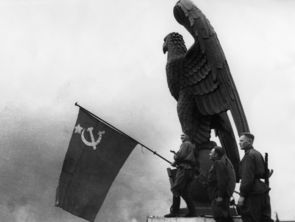Thursday, 26 April 1945
Tempelhof airport: forced labour for armaments
On 26 April 1945, Soviet troops advance in Neukölln to Hermannplatz and take Tempelhof Airport. Work on the airport grounds had only been completely suspended the day before. At the time of liberation, hundreds of forced labourers were still on the airport grounds. Until the end they had to work for the German aviation industry and the armaments production of the Nazi regime in the aircraft factories of the airport. Many of them lived in inhumane conditions until the end of the war, in several barracks camps on the grounds, fenced in by barbed wire. Others were housed in shared accommodation outside the airport.
The former forced labourer Karel Kincl remembers:
"For almost three weeks we slept only on the boards of the bedsteads, unwashed, unshaven, in work clothes, and in what was left of our clothes... Those who were prone to colds naturally got fever, inflammation of the respiratory tract and similar diseases."
They all worked under extreme pressure in the production of "Deutsche Lufthansa" and "Weserflug". For the Western European forced labourers the day and night shifts usually lasted 12 hours, for the deported "Eastern workers" up to 36 hours. Gestapo interrogations and beatings were the order of the day.
At the end of 1943 heavy bombing raids destroyed many barracks and part of the old airport building. In the night from 26 to 27 April 1945, the exploitation of the forced labourers in Tempelhof came to an end - but almost all of them now faced new challenges: the search for food, water and safe sleeping places. Quite a few of them set off on foot on their way home.
Since the 1990s, the history of forced labour at Tempelhof Airport has been dealt with by civil society initiatives. For some years now, archaeological excavations have also been taking place on the site. This is one of the topics covered by the new temporary exhibition of the Nazi Forced Labour Documentation Centre "Exclusion. Archaeology of the Nazi Internment Camps“.
(Source: Karel Kincl, letter to the Berlin History Workshop; Nazi Forced Labour Documentation Centre , Collection Berlin History Workshop)

![[Translate to englisch:] Barracks camp at Columbiadamm, Tempelhof airport (today "Tempelhofer Feld"). The camp was liberated by Soviet troops on 26 April 1945. Photo: January 1944](https://www.zwangslager-berlin-1945.de/fileadmin/_processed_/d/f/csm_1._April_Lager_Columbia_30b25119cd.jpg)